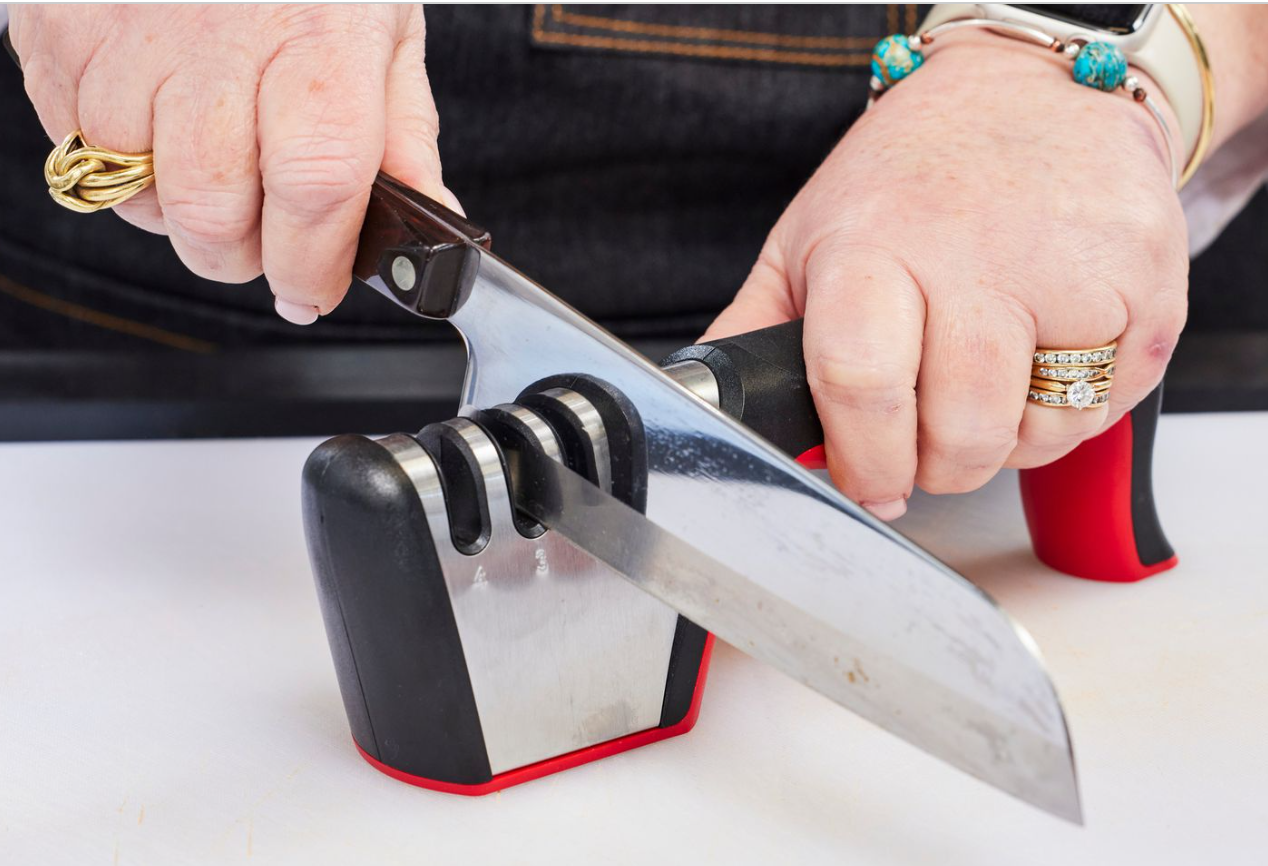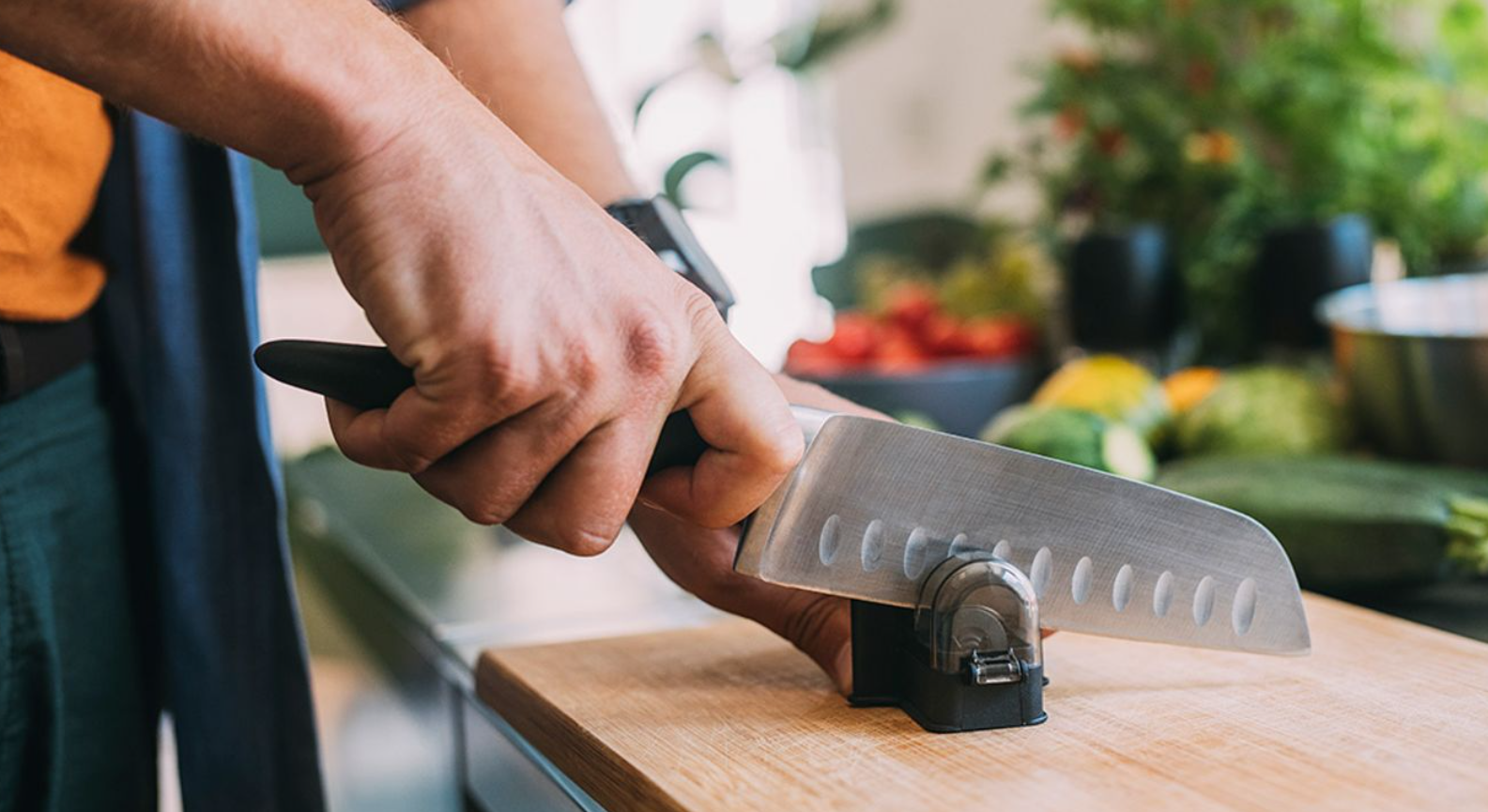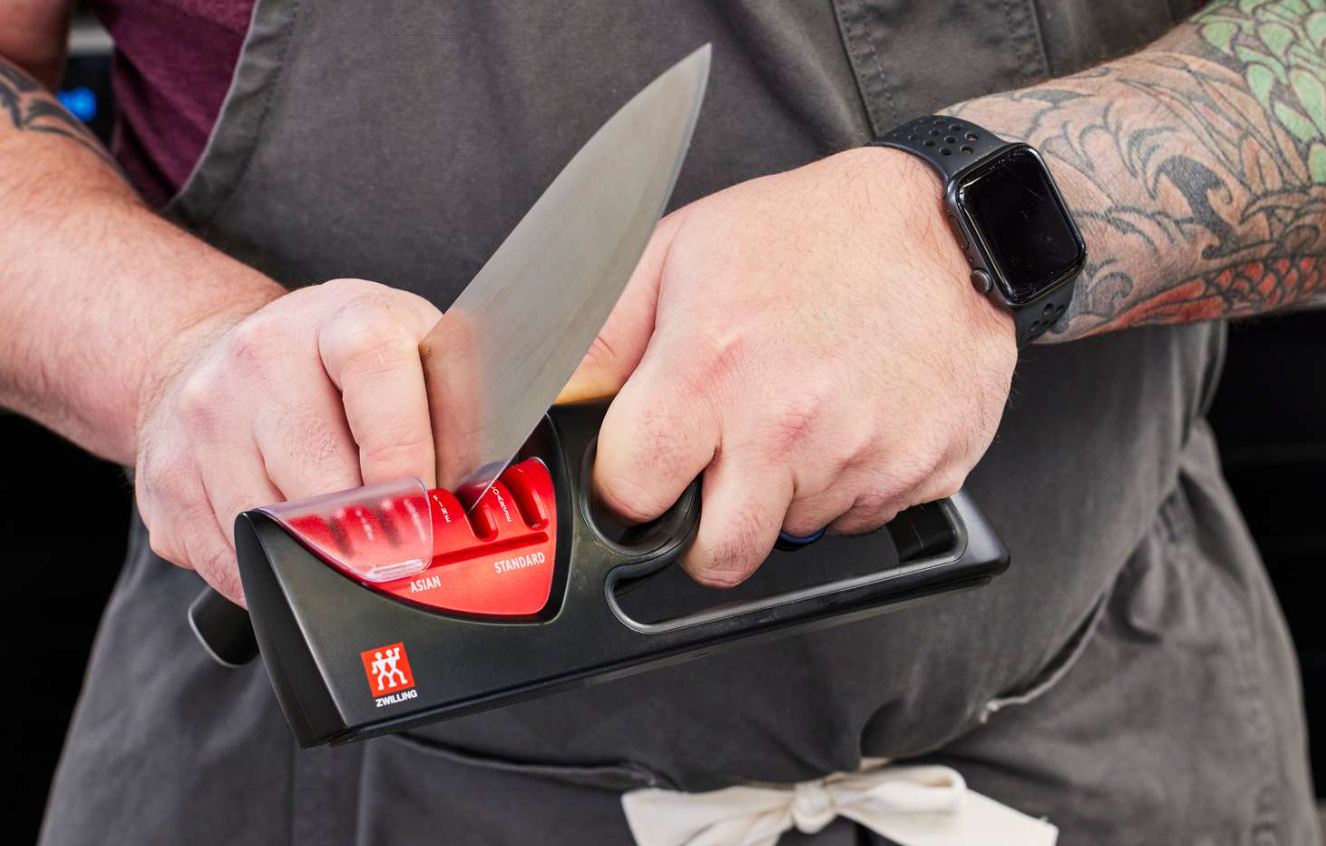Knife sharpeners are essential tools for anyone who wants to maintain their knives in top condition. There are several different types of knife sharpeners on the market, each with its own advantages and disadvantages. Some of the top knife sharpeners include electric sharpeners, whetstones, and sharpening rods. Electric sharpeners are convenient and easy to use, making them a popular choice for many home cooks. Whetstones are a traditional option that require a bit more skill to use effectively, but they offer precise control over the sharpening process. Sharpening rods, also known as honing rods, are great for maintaining a knife’s edge between sharpenings.
To use a knife sharpener effectively, it’s important to first determine the type of blade you have and the level of sharpening it needs. Electric sharpeners typically have different settings for different types of knives, so be sure to select the appropriate setting before sharpening your knife. When using a whetstone, it’s important to soak the stone in water for about 10-15 minutes before using it. This will help prevent the stone from becoming too dry and causing damage to your knife. To sharpen a knife with a whetstone, hold the knife at a 20-degree angle to the stone and move it back and forth in a smooth, consistent motion. Repeat this process on both sides of the blade until you have achieved the desired level of sharpness.
When using a sharpening rod, hold the rod vertically on a stable surface and place the knife blade against the rod at a 20-degree angle. With light pressure, move the knife blade down the length of the rod, starting at the base of the blade and moving towards the tip. Repeat this process on both sides of the blade until the knife is sharp.
Regardless of the type of knife sharpener you choose, it’s important to take your time and pay attention to the sharpening process. Rushing through the process can result in a poorly sharpened knife, which can be dangerous to use. It’s also important to regularly maintain your knives by honing them with a sharpening rod to keep them sharp between sharpenings.
In conclusion, knife sharpeners are essential tools for keeping your knives in top condition. Whether you choose an electric sharpener, whetstone, or sharpening rod, it’s important to use them effectively to achieve the best results. By taking your time and paying attention to the sharpening process, you can ensure that your knives are always sharp and ready for use.

Understanding Different Types of Knife Sharpeners
When it comes to knife sharpeners, there are several different types to choose from, each with its own advantages and disadvantages. One common type is the whetstone, which is a traditional method that involves manually sharpening the blade by sliding it across the stone at a specific angle. This method requires skill and practice to master, but it can provide a very sharp edge when done correctly. Another popular type is the electric knife sharpener, which is a convenient option for those who want a quick and easy way to sharpen their knives. These sharpeners use abrasive wheels to grind away metal and create a sharp edge.
However, they can be more expensive and may not provide as precise of an edge as a whetstone. There are also sharpening rods, which are handheld tools that can be used to quickly touch up a blade’s edge. While they are easy to use, they may not be as effective at sharpening very dull knives. Finally, there are sharpening systems that use a guided rod to ensure a consistent angle while sharpening. These systems can be more expensive but are great for those who want a foolproof way to sharpen their knives. Ultimately, the best type of knife sharpener will depend on your personal preferences and the type of knives you have. It’s important to consider factors like cost, ease of use, and the level of sharpness you desire when choosing a sharpener for your knives.
Choosing the Best Sharpener for Your Needs
When it comes to choosing the best sharpener for your needs, there are several factors to consider to ensure you get the most out of your investment. One of the first things to consider is the type of tool or implement you will be sharpening. Different sharpeners are designed for specific purposes, such as knives, scissors, or pencils, so it’s important to choose one that is suited to the task at hand.
Additionally, you’ll want to consider the material of the blade or point you’ll be sharpening, as some sharpeners are better suited for certain materials than others. Another important factor to consider is the level of precision and sharpness you require. Some sharpeners are designed to quickly sharpen blades to a functional level, while others are capable of producing a razor-sharp edge for more precise cuts. Additionally, consider the ease of use and maintenance of the sharpener.
Some models require more manual effort and regular cleaning, while others are more automated and low-maintenance. Finally, consider the durability and longevity of the sharpener. Investing in a high-quality sharpener may cost more upfront, but it will likely save you money in the long run by lasting longer and providing better results. By carefully considering these factors, you can choose the best sharpener for your needs and ensure that your tools and implements are always in top condition.

Step-by-Step Guide to Using Knife Sharpeners
A knife sharpener is a valuable tool that can help you maintain the sharpness of your knives for optimal performance in the kitchen. To use a knife sharpener effectively, it is important to follow a step-by-step guide to ensure that you achieve the best results. The first step is to determine the type of knife sharpener you have – whether it is a manual or electric sharpener. Once you have identified the type of sharpener, the next step is to carefully read the manufacturer’s instructions to understand how to use the sharpener properly.
After familiarizing yourself with the instructions, the third step is to prepare the knife for sharpening by ensuring it is clean and free of any debris. This will help prevent any damage to the blade during sharpening. The fourth step is to securely hold the knife in place and begin the sharpening process. For manual sharpeners, you will need to run the blade through the sharpening slots a few times until you achieve the desired sharpness. For electric sharpeners, you simply need to turn on the machine and guide the blade through the sharpening slot.
As you sharpen the blade, it is important to maintain a consistent angle and pressure to ensure an even sharpening of the blade. Once you have completed the sharpening process, the final step is to clean and dry the knife to remove any metal shavings that may have accumulated during sharpening. By following these steps carefully, you can ensure that your knives remain sharp and ready for use in the kitchen. Remember that regular maintenance and sharpening of your knives will not only improve their performance but also extend their lifespan.
Maintaining Your Knife Sharpener for Longevity
Proper maintenance of your knife sharpener is essential for ensuring its longevity and optimal performance. One of the key steps in maintaining your knife sharpener is regular cleaning. This involves removing any debris, metal shavings, or residue that may accumulate on the sharpening stones or rods. Failure to clean your sharpener can lead to a decrease in sharpening efficiency and may even cause damage to the blades of your knives. Additionally, it is important to regularly inspect the sharpening surface for any signs of wear or damage.
If you notice any cracks, chips, or uneven wear on the sharpening stones or rods, it is crucial to replace them promptly to prevent any further damage to your knives. In addition to cleaning and inspecting your sharpener, it is also important to store it properly. Avoid storing your sharpener in damp or humid environments, as this can cause rust to develop on the sharpening surfaces. Instead, store your sharpener in a dry, cool place away from moisture and direct sunlight. By following these simple maintenance tips, you can ensure that your knife sharpener remains in top condition and continues to provide you with sharp and precise knife edges for years to come.

Common Mistakes to Avoid When Sharpening Knives
When it comes to sharpening knives, there are several common mistakes that should be avoided to ensure optimal results. One mistake is using the incorrect angle when sharpening. Knives are typically sharpened at a specific angle, and using the wrong angle can result in a blade that is not as sharp as it could be. Another mistake is applying too much pressure when sharpening. While it may seem intuitive to apply more pressure to the blade, doing so can actually damage the edge and make the knife less effective.
Additionally, many people make the mistake of not properly cleaning and drying the knife before sharpening it. This can lead to debris getting caught in the sharpening stone and causing damage to the blade. Finally, another common mistake is using the wrong type of sharpening stone. Different knives require different types of sharpening stones, so it is important to use the correct one to achieve the best results. By avoiding these common mistakes, you can ensure that your knives are sharp and effective for all your cutting needs.
